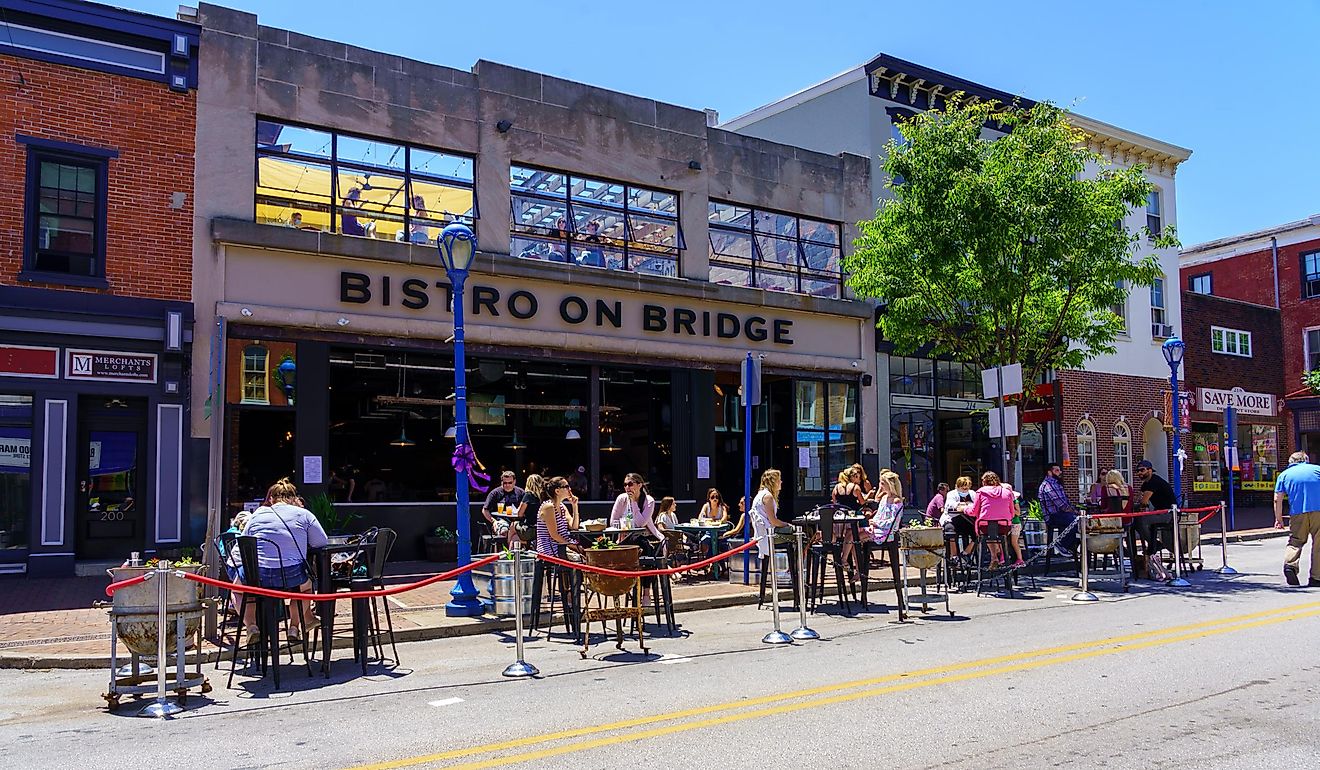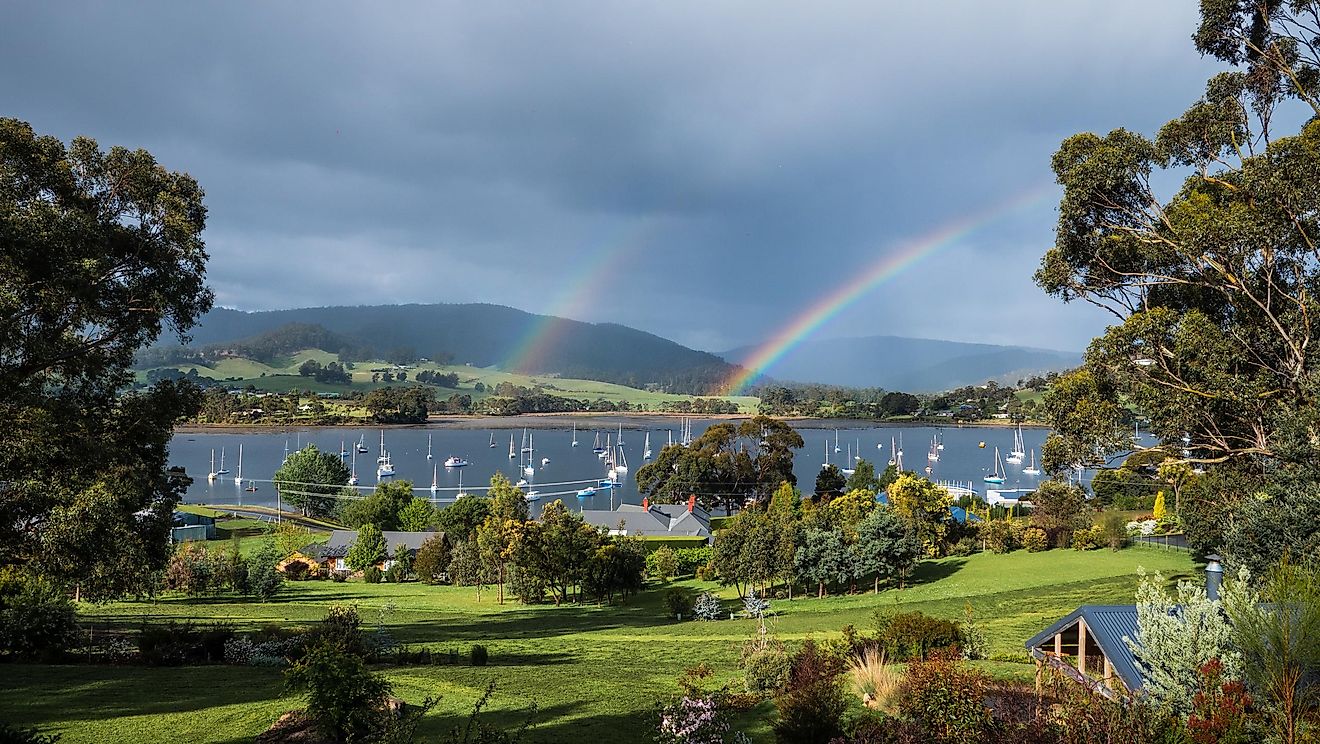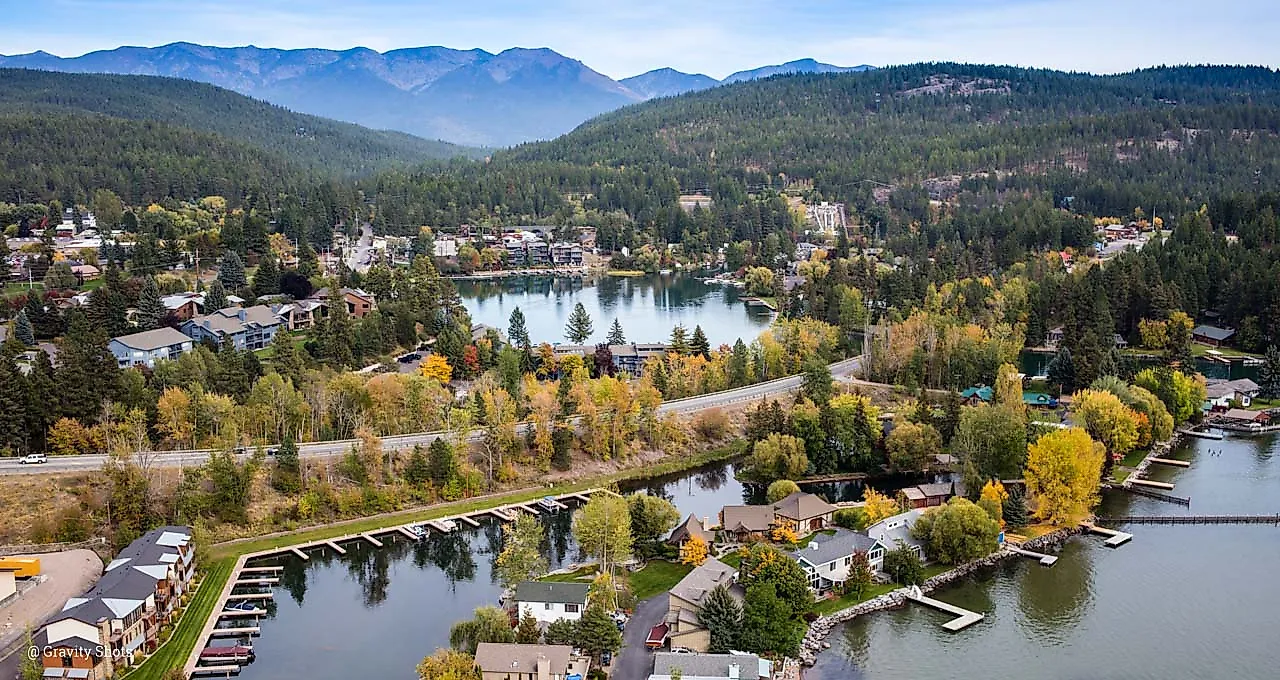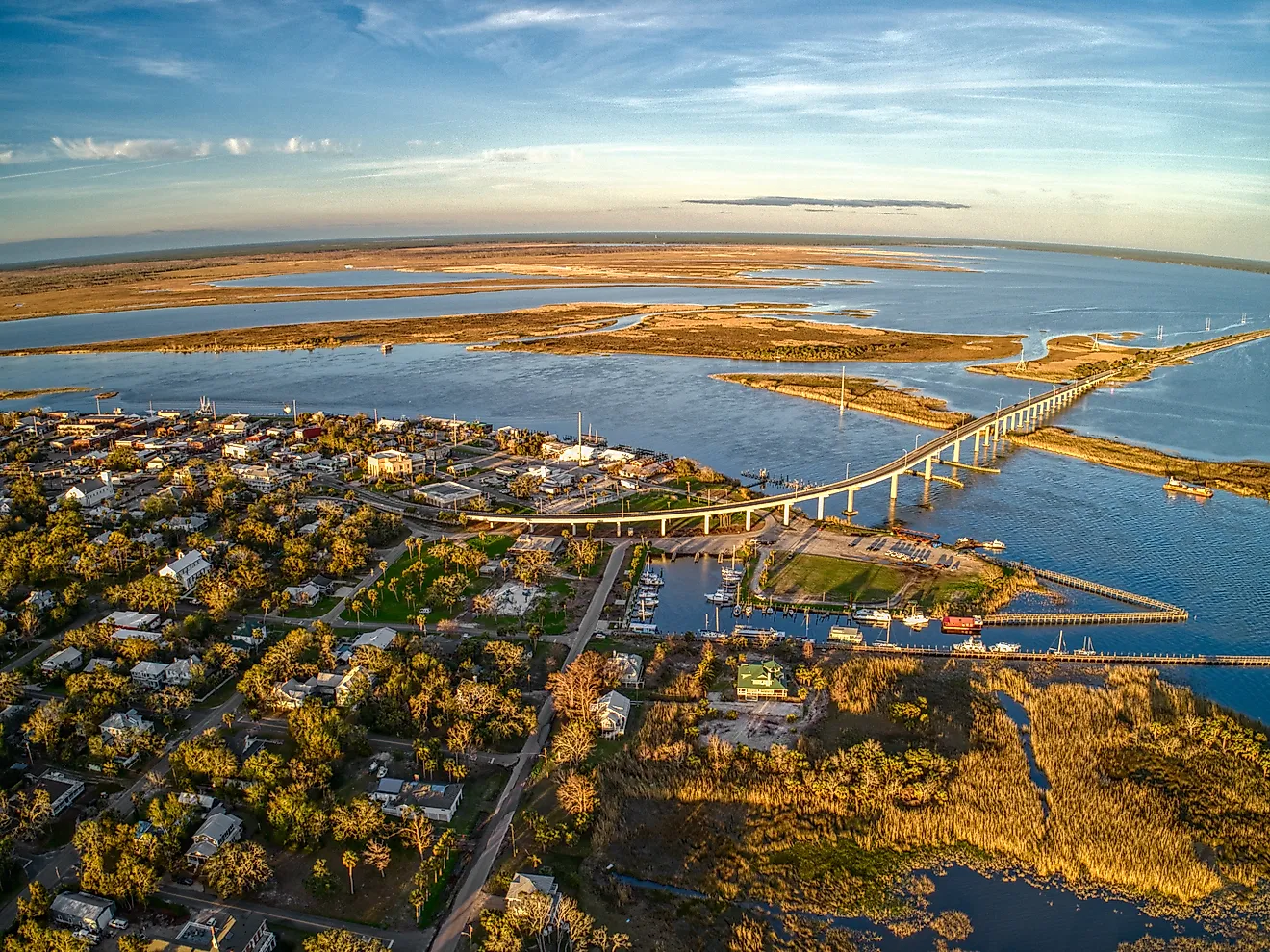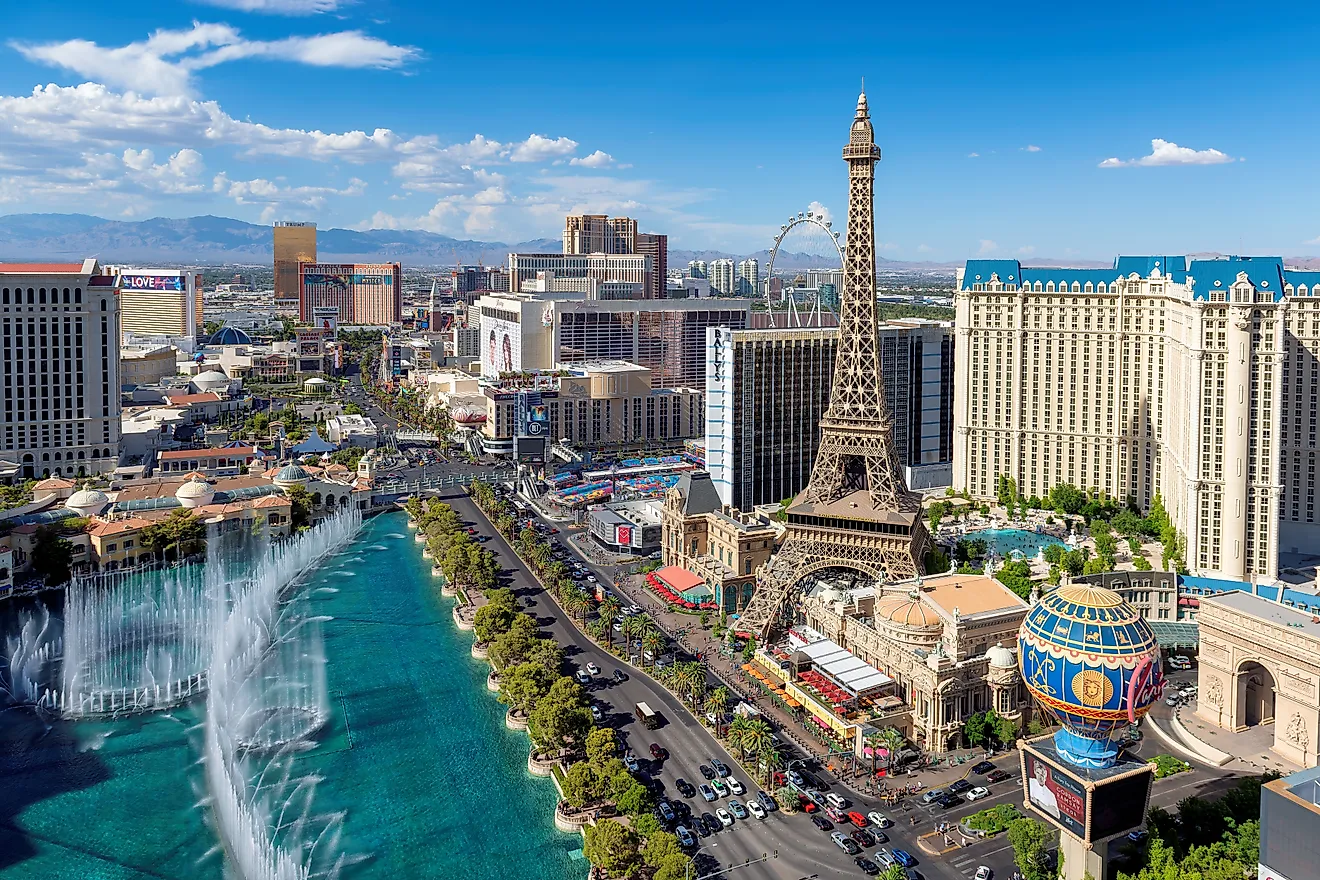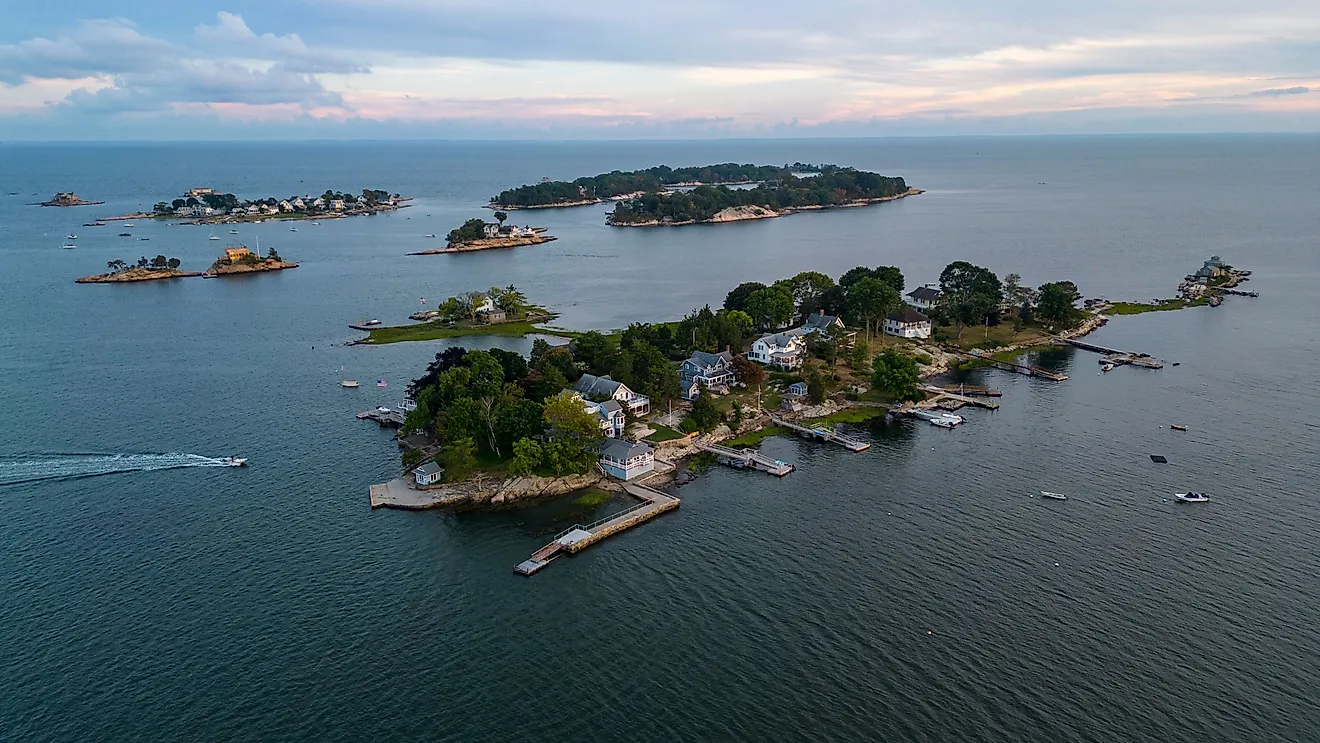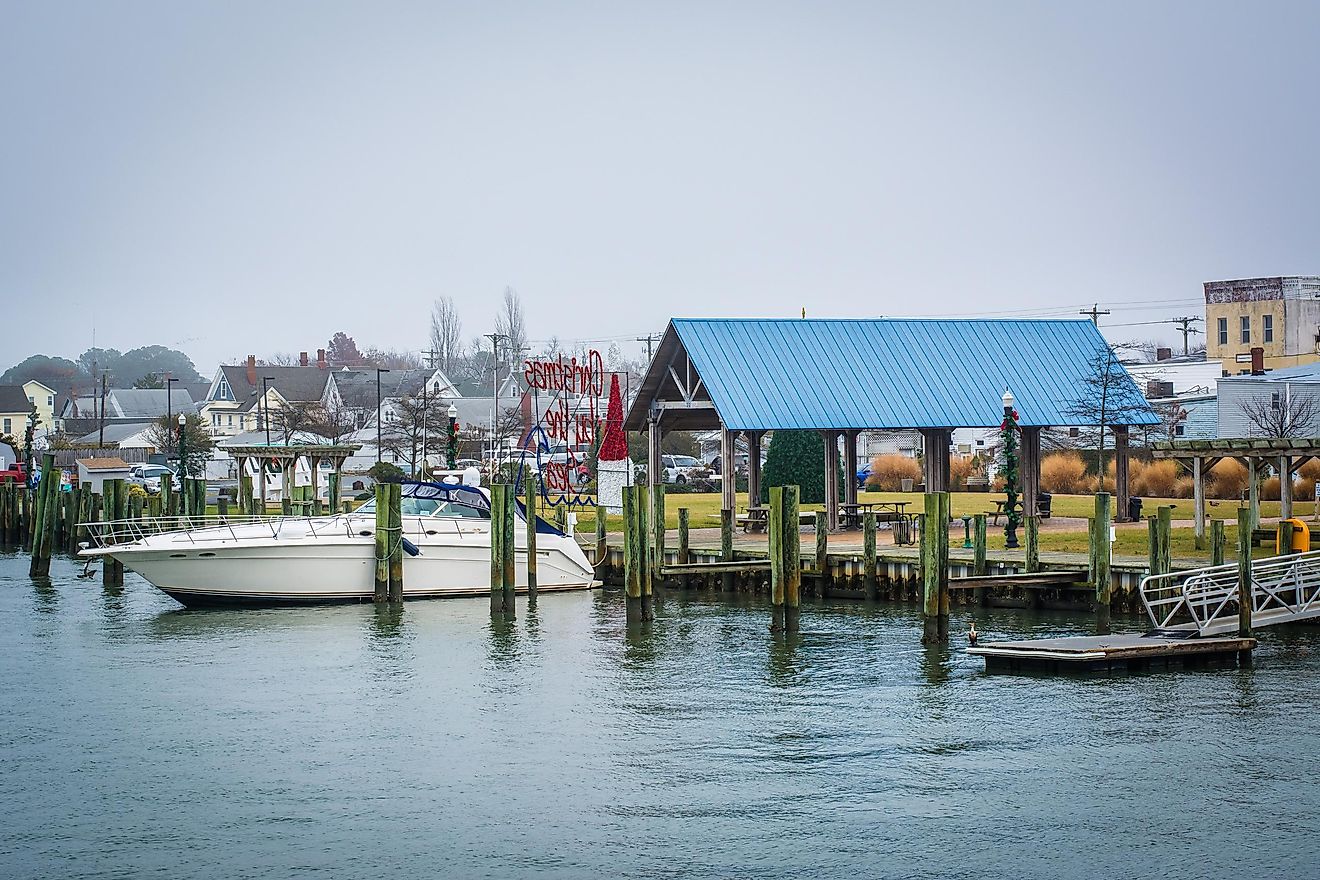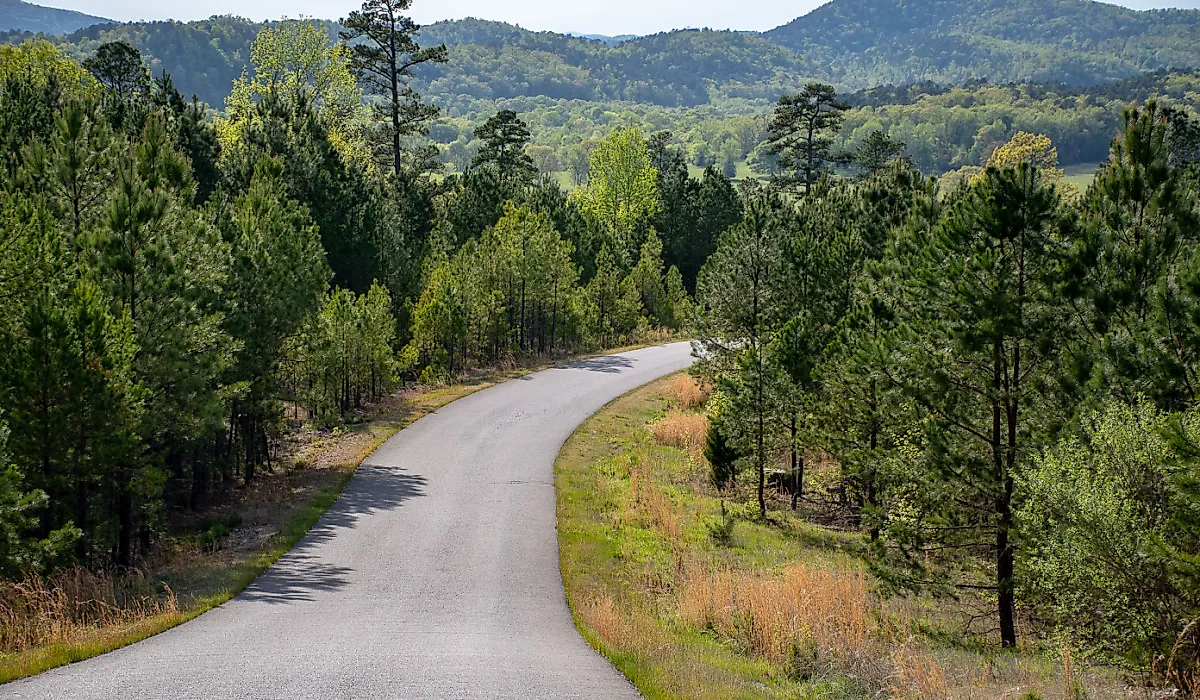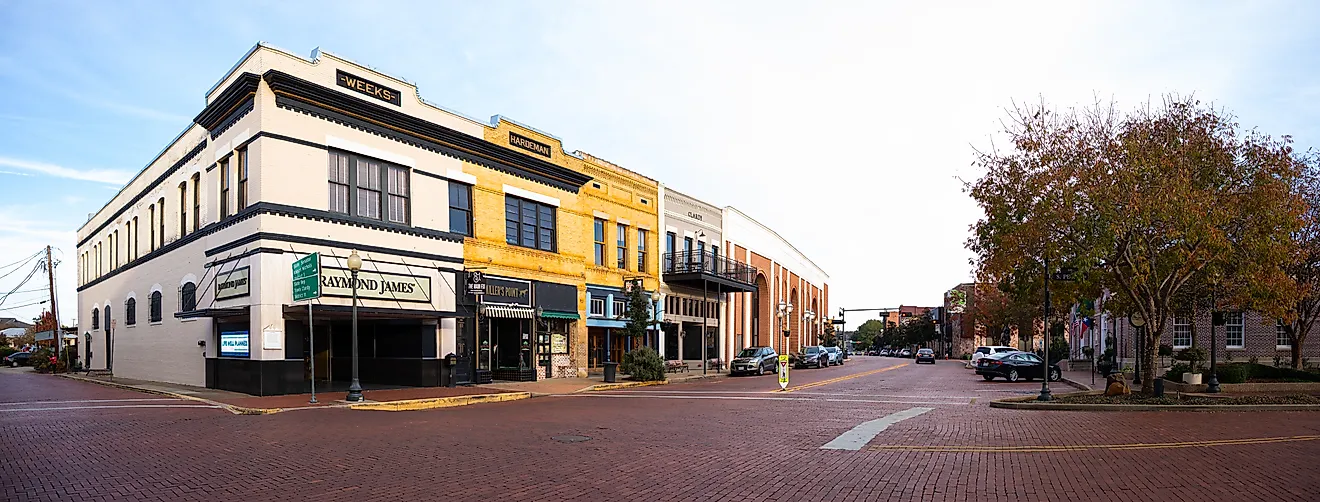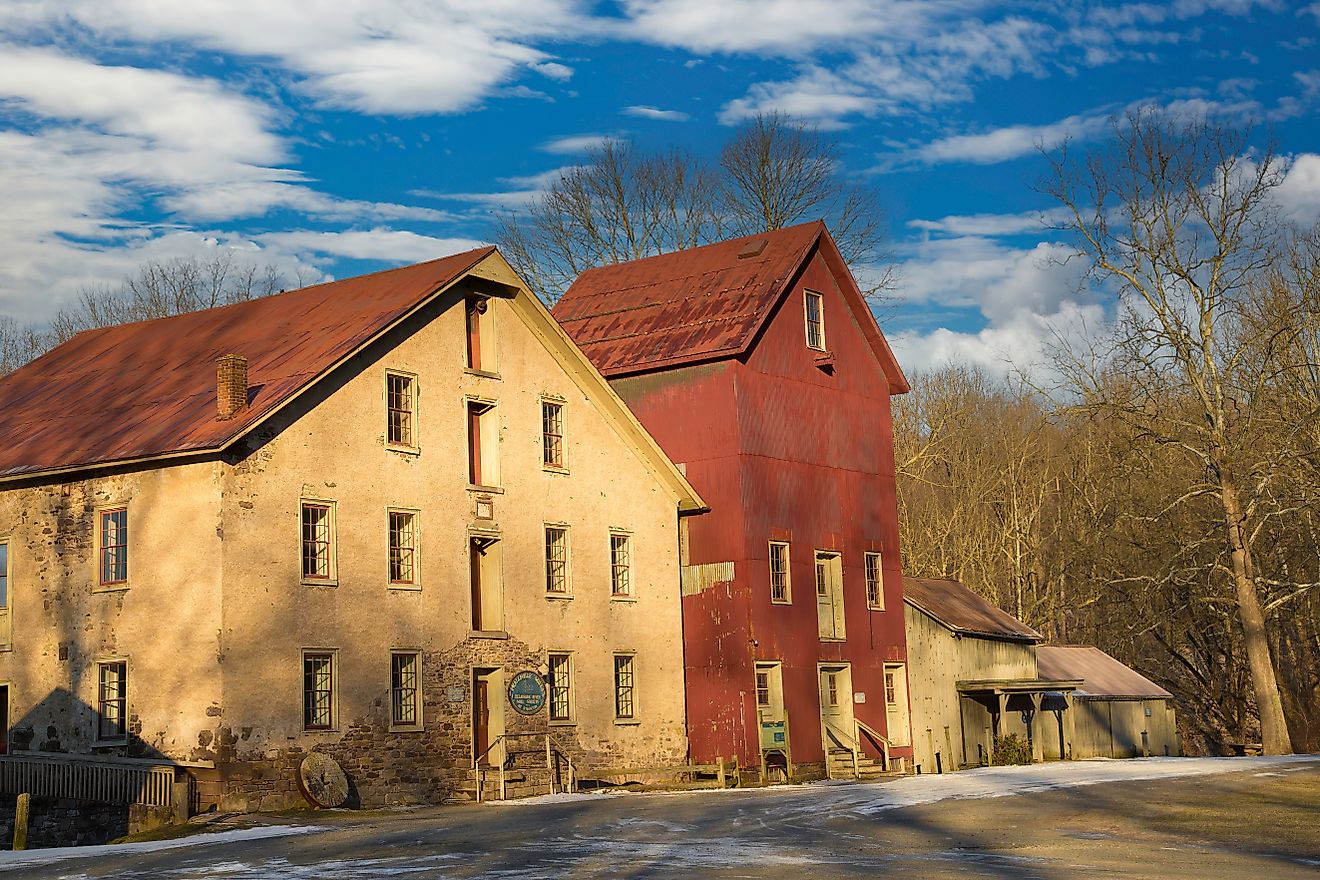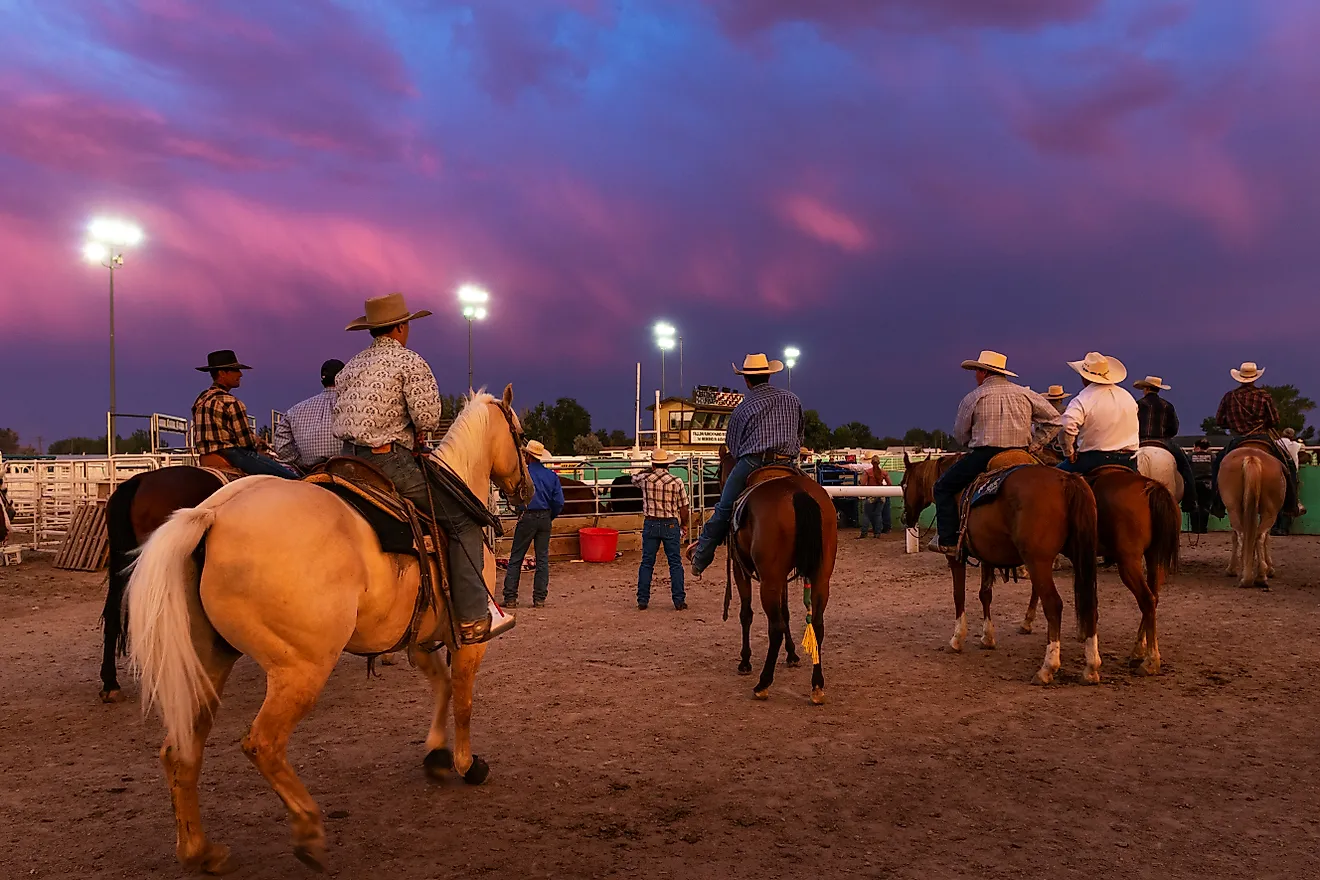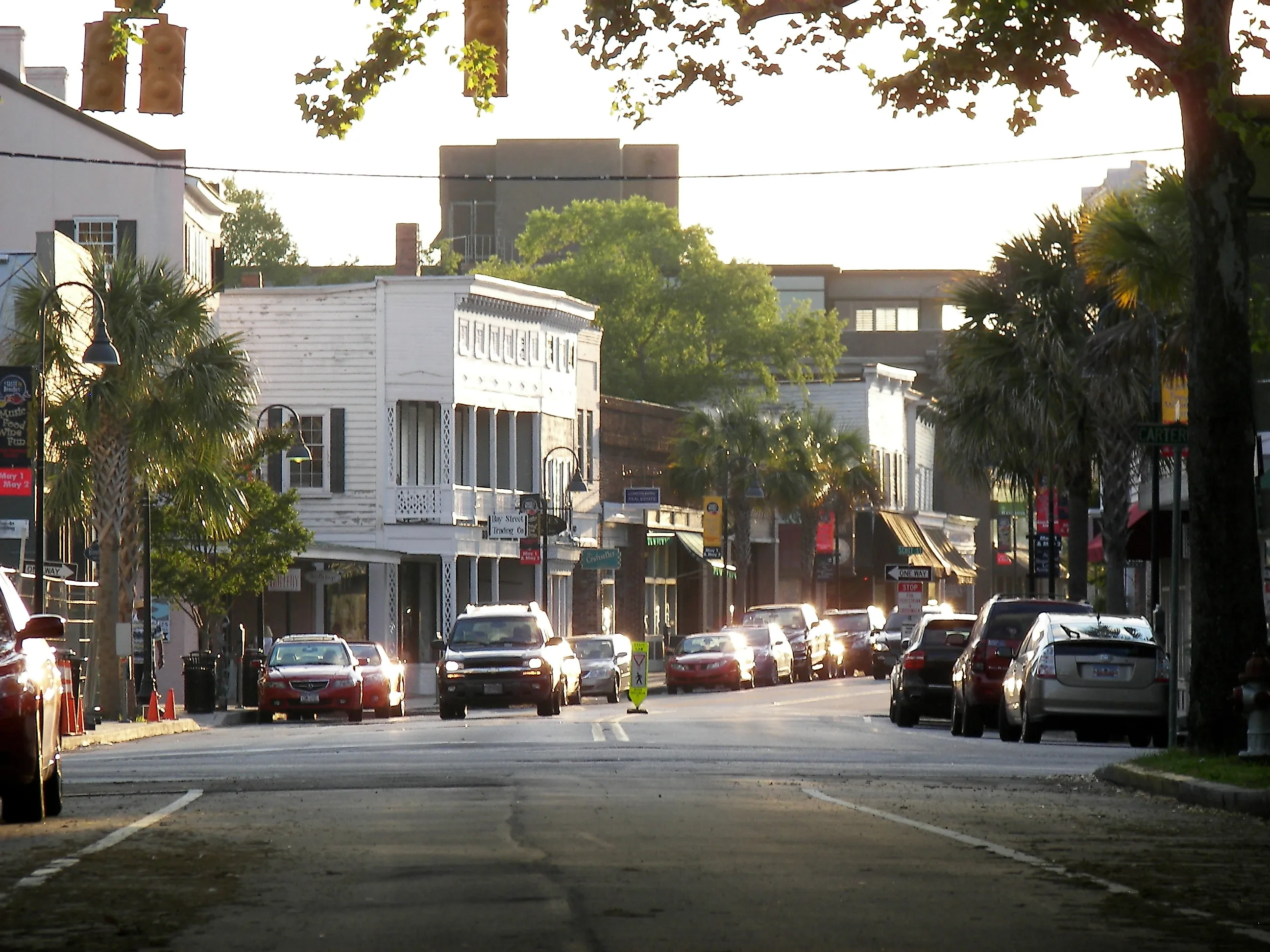
9 Best Towns In South Carolina For A Two-Day Recharge
South Carolina works like a portable charger wired to salt marsh, pine ridge, and black‑water river. Slip the mental USB into any of nine small‑town ports and a depleted week climbs back to 100 percent before Monday notices.
Each stop on this circuit, spaced from tidal Beaufort to foothill Travelers Rest, operates on its own current. This guide maps the state’s most efficient recharge stations: places where the town limits close like soundproof doors, where café steam and live‑oak shade do the heavy lifting, and where lodging still feels anchored to the ground it occupies. Nine destinations, nine distinct amperages and all proof that South Carolina’s true power grid lies far from the interstates!
Beaufort
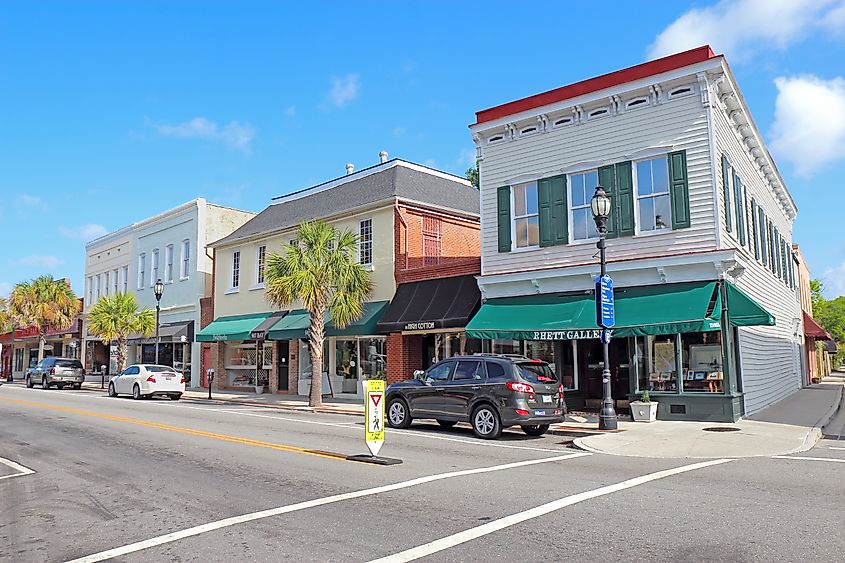
Spanish moss doesn’t just hang in Beaufort, it seems to listen. Hanging in hushed curtains from live oaks lining Bay Street, it frames the town’s 18th- and 19th-century architecture in a way no other South Carolina town quite matches. Beaufort is one of only a few U.S. towns designated a National Historic Landmark in its entirety, and it shows. Once a center of antebellum rice wealth, the town later became the headquarters for the Union Army during the Civil War. The result is a rare layering of preserved Southern Gothic, Gullah culture, and Reconstruction-era history, all walkable in under an hour.
Begin on the wraparound porch of Blackstone’s Café with shrimp and grits, then move to Penn Center on St. Helena Island, one of the nation’s first schools for formerly enslaved people. The John Mark Verdier House on Bay Street gives an unvarnished glimpse of planter life before the war. For a slow afternoon, Henry C. Chambers Waterfront Park offers shaded benches and riverfront swings with views of the Beaufort River. Stay at Anchorage 1770, a white-tabby mansion turned boutique inn, where breakfast includes a front porch overlooking the marsh. Everything essential is within walking distance.
Bluffton
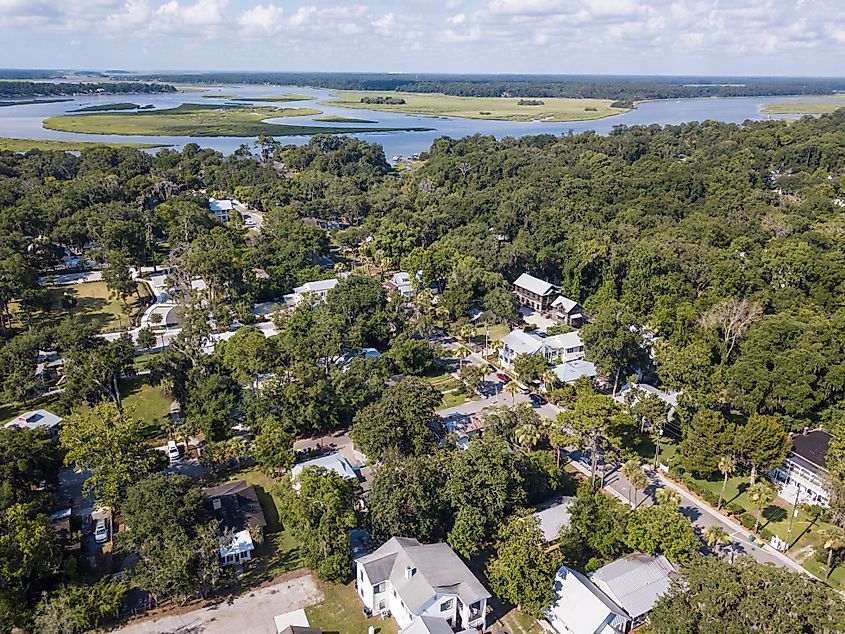
Bluffton sits on a rise above the May River, and its geography has always dictated its pace. A lot of Bluffton was spared during the Civil War, leaving a rare cluster of pre-war homes and churches intact. The Church of the Cross, built in 1857, still faces the river with its cypress board walls and unpainted interior. The town’s history is also marked by secession; in 1844, the “Bluffton Movement” became an early protest against federal control, a lesser-known prelude to South Carolina’s later role in the Civil War.
The rhythm of Old Town remains intact. Locals gather at Corner Perk Brunch Café, where small-batch coffee and sourdough breakfast sandwiches dominate the morning. Pluff Mudd Art Gallery, housed in a restored cottage, displays coastal and folk art just steps from the riverfront. May River Excursions, operating out of a weathered dock at the end of Calhoun Street, offers small-boat tours through oyster reefs and salt marshes. Evening draws diners to The Bluffton Room, known for its unhurried pacing, open-air patio, and tableside cocktails. Old Town Bluffton Inn, a 14-room property with wraparound porches and curated interiors, anchors the historic core.
Aiken
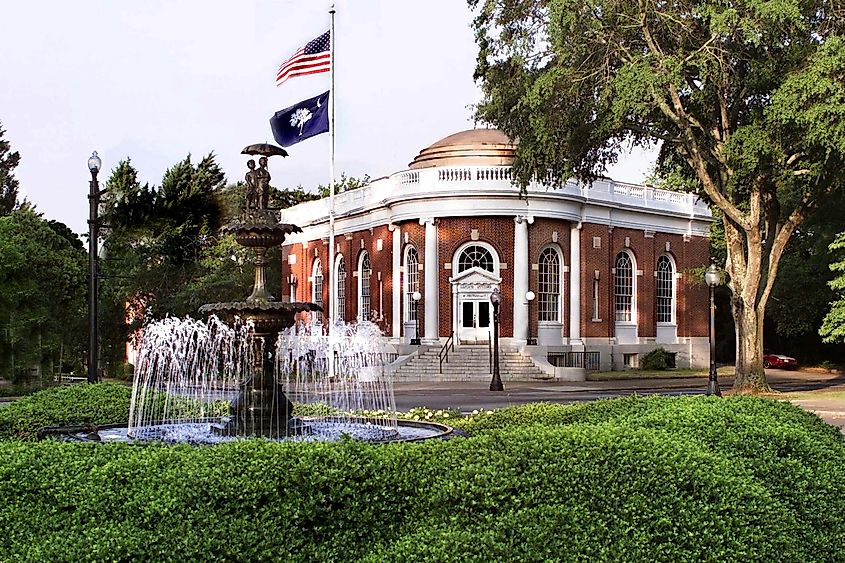
Aiken was built for recovery. In the late 1800s, wealthy Northerners escaping cold winters turned it into a seasonal retreat, bringing horses, carriages, and a taste for quiet luxury. What remains is a town shaped by equestrian life, wide unpaved streets like South Boundary Avenue, lined with live oaks, were designed for horseback riding, not traffic. Hitchcock Woods, one of the largest urban forests in the country, sits in the middle of town and covers over 2,000 acres, crisscrossed by equestrian trails that predate the automobile.
The town’s scale supports slow movement. New Moon Café on Laurens Street serves sweet potato biscuits and pour-over coffee until mid-afternoon. A short walk leads to Hopelands Gardens, where gravel paths curve around fountains, camellias, and the former stables of the Iselin estate. The Aiken Thoroughbred Racing Hall of Fame, also inside the gardens, tracks the town’s long connection to flat racing and steeplechase. At dinner, The Willcox offers pan-seared trout and bourbon cocktails inside a 19th-century hotel that once hosted Vanderbilt family holidays. Rooms at The Willcox include clawfoot tubs and coffered ceilings, but the lobby fireplace sees more use than the pool.
Georgetown
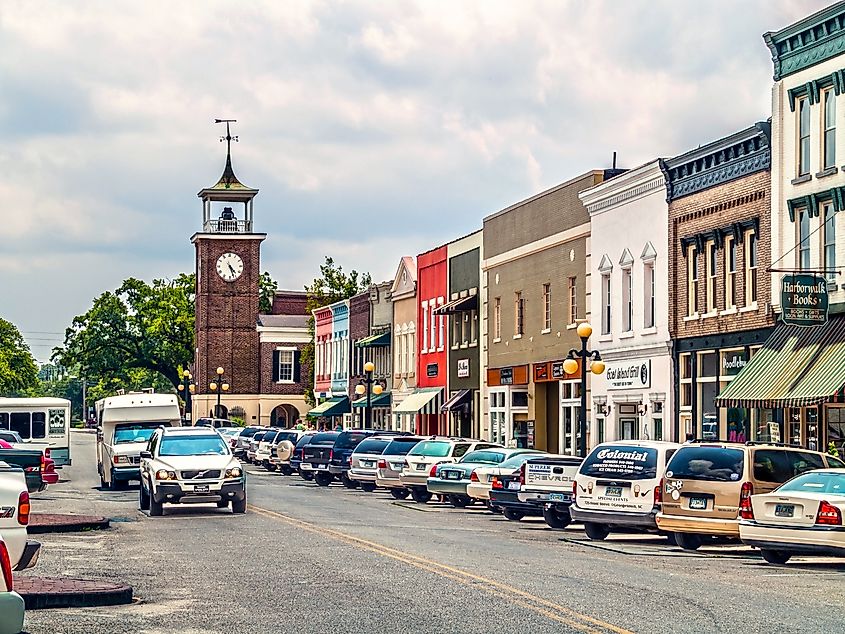
Georgetown sits where five rivers meet Winyah Bay, and its port, older than Charleston’s, once moved more rice than any in the Western Hemisphere. The wealth left behind is visible in places like the Kaminski House, a 1769 Georgian home with Caribbean detailing, and the steeple of Prince George Winyah, an Episcopal church built with bricks fired by enslaved laborers in the 1700s. Hurricanes and the decline of rice left much of the town untouched by later development, preserving a waterfront that still echoes its original layout.
Start the morning at Brewed Awakening on Front Street with a pimento cheese biscuit and black coffee before walking to the South Carolina Maritime Museum, where the original Fresnel lens from the North Island lighthouse is on display. The Rice Museum, housed in the Old Market Building with its 1842 clock tower, documents the engineering and brutality of Carolina Gold rice cultivation. Accommodations at the Georgetown Marina Hampton Inn include marsh views and quick access to the Harborwalk, where the air smells like pluff mud and salt.
Camden
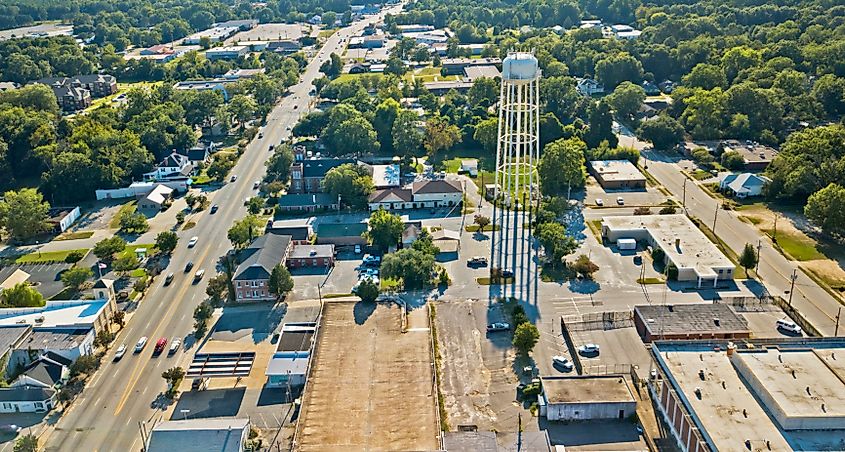
Camden carries its age in full view. Founded before the American Revolution and occupied by British troops in 1780, it became both a symbol of early defeat and later resilience. The streets still follow the colonial grid laid down by Joseph Kershaw, and the town’s edge softens into longleaf pine forests and slow blackwater creeks. Broad Street is lined with pre-war storefronts, while carriage lanes behind Lyttleton Street pass homes where iron gates open onto magnolia-lined paths. In spring, foxhunts still gather at dawn outside the Hunt Country stables.
At Books on Broad & Coffee, the smell of roasted beans mixes with ink and old paper, and breakfast scones arrive on china. The Historic Camden Revolutionary War Site, set across 100 acres, includes the Kershaw-Cornwallis House and fragments of British redoubts held during the occupation. At Sam Kendall’s, meals are served beneath pressed-tin ceilings with walls of exposed brick once used for a dry goods store. Lake Wateree State Park, fifteen minutes west, offers flooded forests and gravel trails along the shoreline where ospreys dive in silence.
Clemson
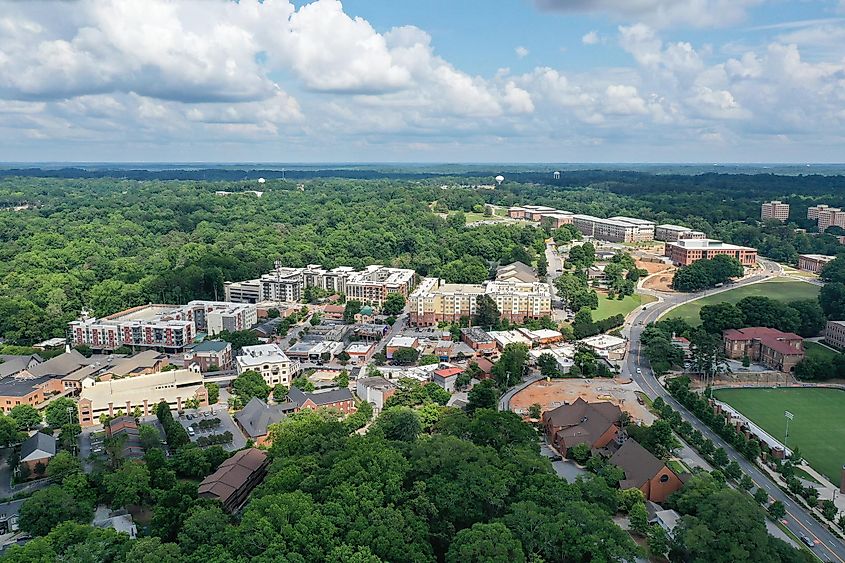
Clemson is shaped by its geography and its school. The town sits on a ridge between Lake Hartwell and the Blue Ridge foothills, built around the university that gave it life in 1889. Before that, it was the Fort Hill plantation, home to John C. Calhoun. His house still stands at the center of campus, surrounded by red-brick halls and oak canopies. Clemson’s compactness comes from its dual role as a college town and lakeside retreat. On fall Saturdays, Memorial Stadium becomes one of the largest population centers in the state.
Mornings start at All In Coffee Shop, where espresso and scones rotate with student art on the walls. The South Carolina Botanical Garden, a 295-acre expanse on the southern edge of campus, includes a heritage trail, butterfly garden, and restored cabin from the 1710s. At The Esso Club, once a 1920s gas station, framed jerseys hang above the bar where catfish sandwiches and local beer fill the lunch crowd. Sunset draws locals to the docks at Clemson Marina, where pontoons sway in the wake of fishing boats. The Abernathy, a boutique hotel with direct access to downtown and campus, offers rooms with views of College Avenue and the occasional echo of a stadium roar.
Folly Beach
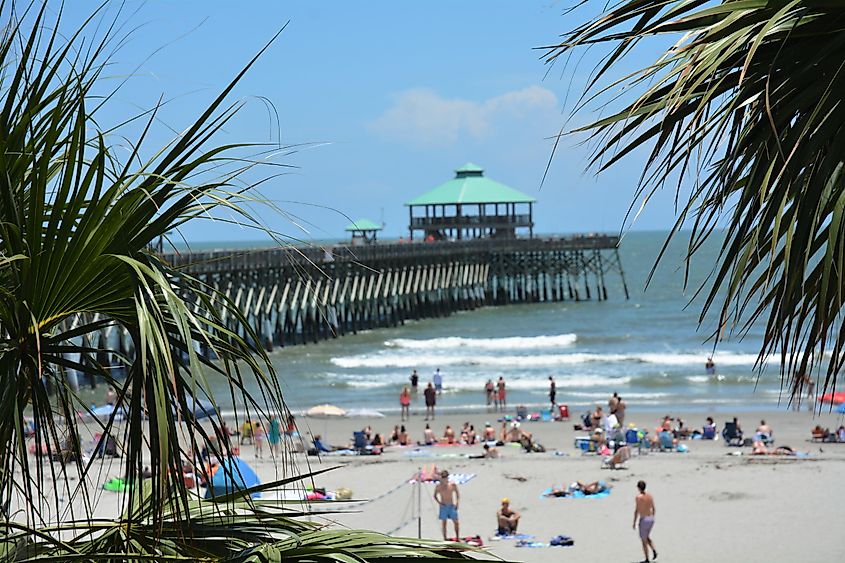
Folly Beach stands seven miles south of Charleston Harbor, bordered by marshland on one side and the Atlantic on the other. It was once called Coffin Island, a quarantine site during the 1700s, though the current rhythm feels more like exile by choice. The town’s layout remains spare, mostly two-lane roads, stilted cottages, and a beachfront that leans into tide and wind rather than against it. Locals still refer to the surf break by name: the Washout. After Hurricane Hugo reconfigured the coast in 1989, the shoreline shifted, and with it, the character of the waves.
Early morning brings surfers and beachcombers to the rebuilt Folly Beach Pier, a concrete structure stretching over 1,000 feet into the Atlantic. At Lost Dog Café, a converted house with sandy floorboards, breakfast includes shrimp benedict and black coffee poured without pause. The Lighthouse Inlet Heritage Preserve sits at the north end of the island, where cracked roads lead to views of the Morris Island Light, surrounded by surf and sea oats. As the tide rolls back, beach cruisers reappear on the hard sand. Tides Folly Beach, the only full-service oceanfront hotel in town, offers balconies facing the water and hallways that still carry the smell of salt.
Isle of Palms
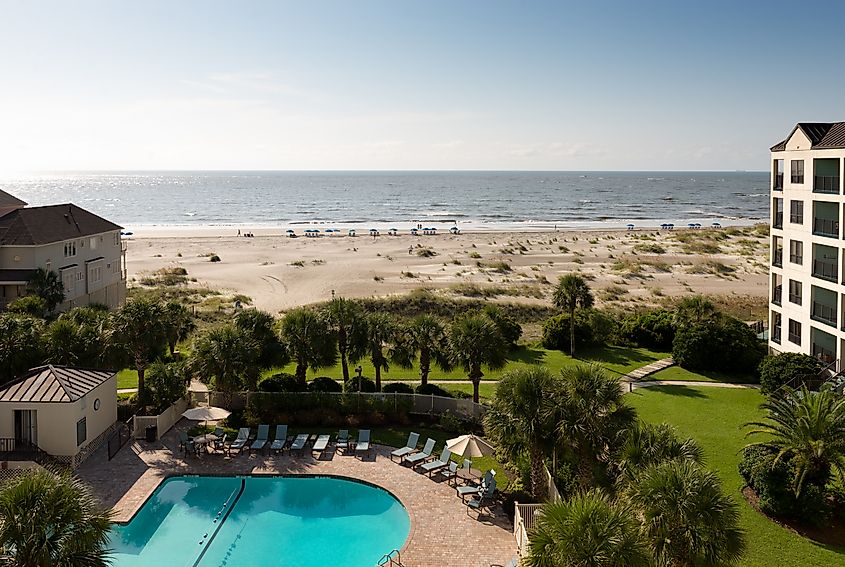
Isle of Palms sits just across the Intracoastal Waterway from Mount Pleasant, stretched thin between tidal marsh and open sea. In the early 1900s, the island was reached by ferry and trolley, and its beach pavilion drew visitors in seersucker suits. Much of that rhythm remains, with long, numbered streets running perpendicular to the sand and a soundscape ruled by waves, cicadas, and the distant thud of volleyballs. The island’s quietest views come not from the beach but from the back side, where creeks bend through spartina grass and oyster beds surface at low tide.
Mornings open at Sea Biscuit Café, a cottage off Ocean Boulevard where crab omelets and iced tea arrive without pretense. Kayaks and paddleboards launch from Isle of Palms Marina, where pelicans watch from pylons and boat wakes rock the dock. At the north end, the ferry to Dewees Island departs on a fixed schedule, no bridge, no cars, carrying passengers into protected dunes and undeveloped maritime forest. Dinner lands at Coda del Pesce, a second-story space overlooking the water, serving flounder with fennel and citrus. The Sweetgrass Inn at Wild Dunes offers rooms inside a gated resort complex, where golf carts drift beneath palmettos and the horizon stays clear.
Travelers Rest
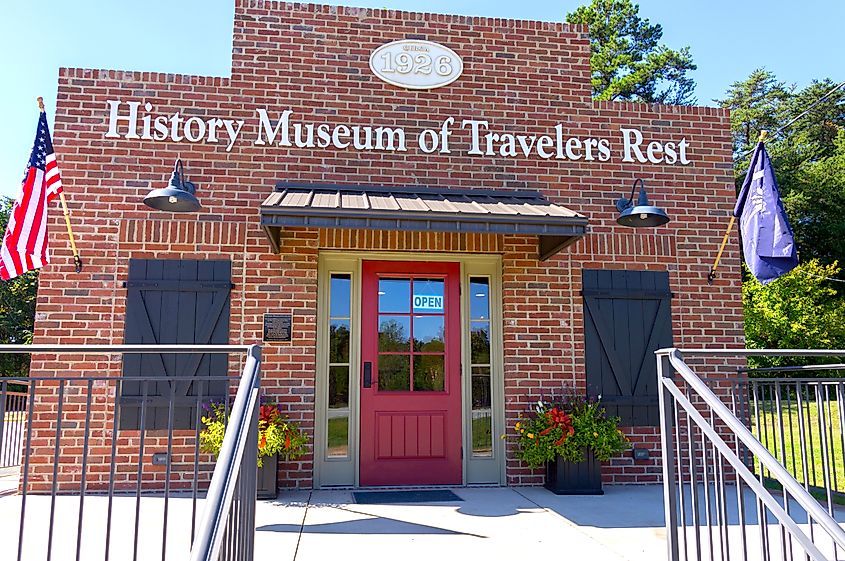
Travelers Rest's name comes from its role as a rest stop for travelers in the 1800s. The town grew around rail service, logging its name on maps long before bicycles redefined its spine. Railroad-era buildings still serve breweries, cafés, and galleries on Main Street where rails once clacked, and remediated railbeds transform into a fourteen-mile path edged with maples and creek crossings.
Morning traffic gathers at Tandem Creperie and Coffeehouse. A few blocks south, Traveler’s Rest Depot District anchors shops and studios inside restored depots. The Swamp Rabbit Brewery, on S. Main Street downtown, pours IPAs beneath vintage railcars. Out on the trail, Paris Mountain State Park starts ten minutes north, where Laurel Mountain Loop curves around Lake Placid and offers creekside benches and waterfalls. At sunset, diners gather at Tandem Creperie and Coffeehouse, choosing savory crepes like ham‑and‑Swiss or Nutella‑banana while trailers coast past.
Rooms at Hotel Domestique, built by former pro cyclist George Hincapie, include white-shuttered windows and a lobby lined with cycling memorabilia. The city grid still reflects historic transit, but the town now breathes through pedal power and creekside shade.
South Carolina’s lesser‑known circuit proves that restoration is a geographic science: slip from mossed riverfront to barrier‑island surf to piedmont rail‑trail and the battery resets without ceremony. Nine towns, none large enough for stoplights to dictate tempo, deliver food, history, and quiet calibrated to 48‑hour spans. The takeaway travels easily, true downtime emerges where stories linger in porch boards, marsh light edits the day’s agenda, and distance remains measurable by bicycle.
